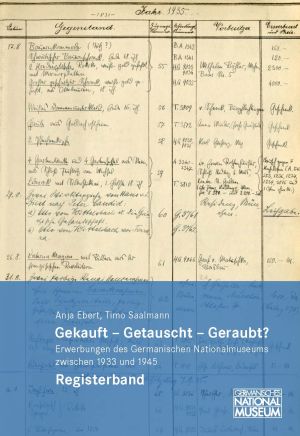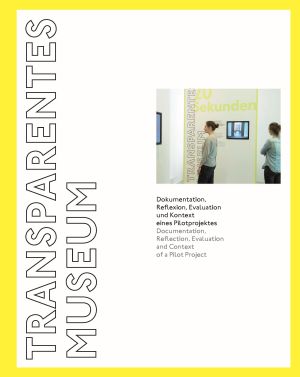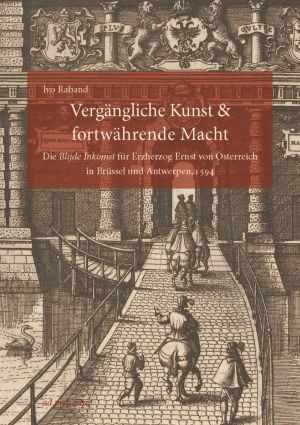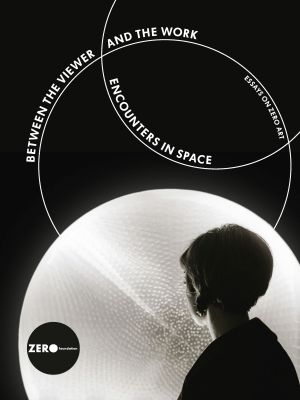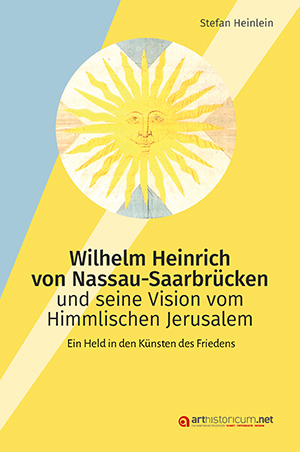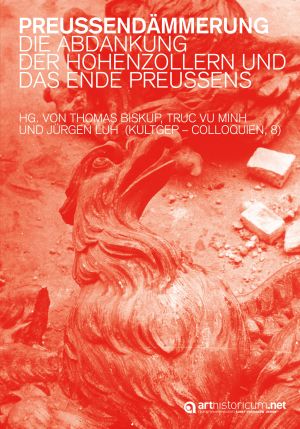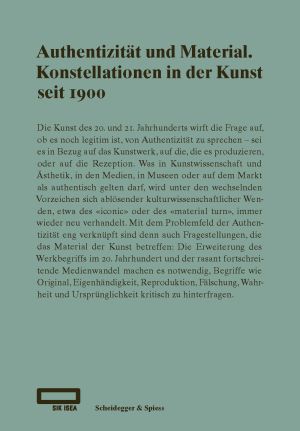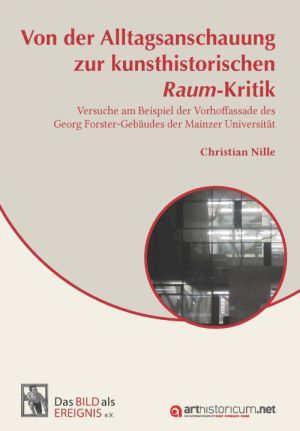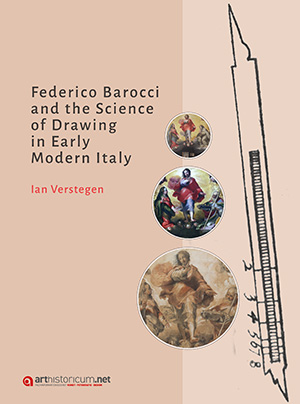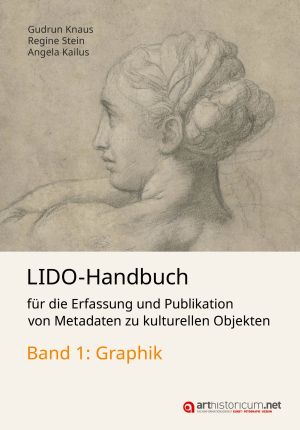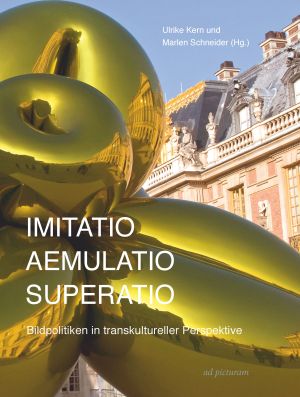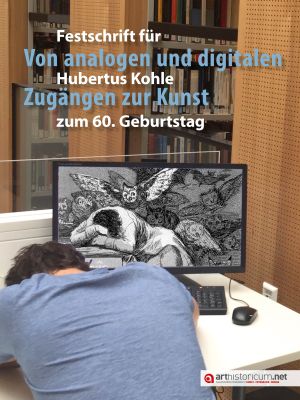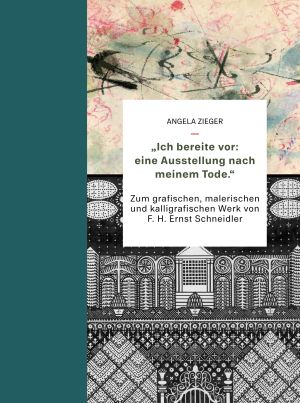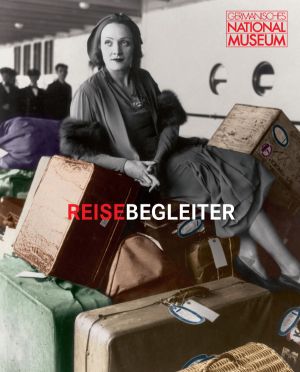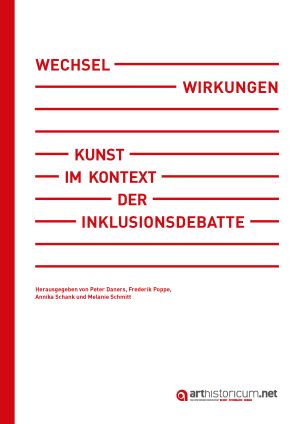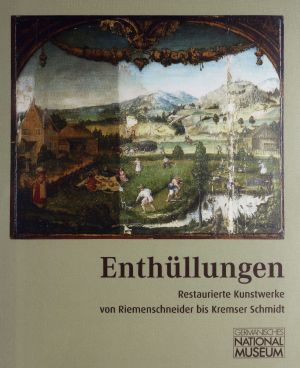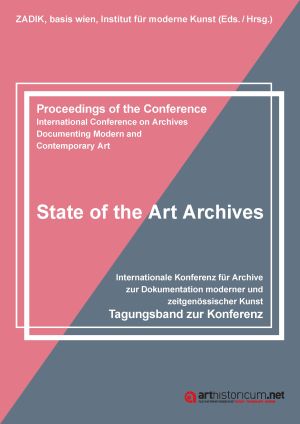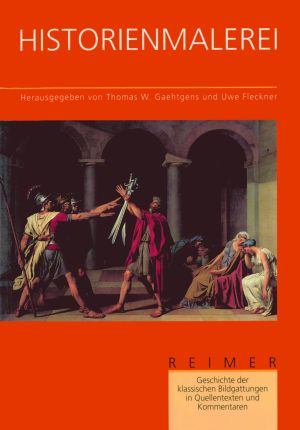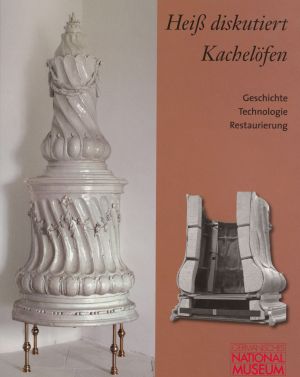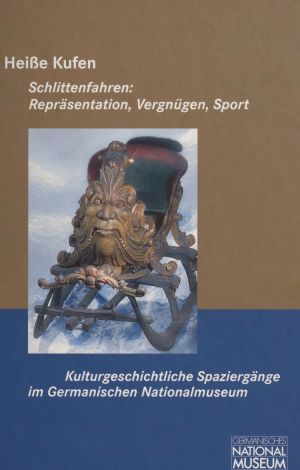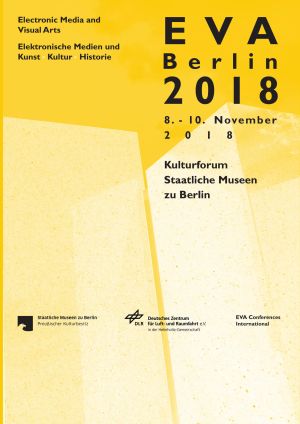Books
Gekauft – Getauscht – Geraubt? Erwerbungen des Germanischen Nationalmuseums zwischen 1933 und 1945: Registerband
Anja Ebert, Timo Saalmann
unter Mitarbeit von Lisa Baluschek, Nadine Raddatz
Gesamtregister für die Bände:
- Gekauft – Getauscht – Geraubt? Erwerbungen zwischen 1933 und 1945 (Kulturgeschichtliche Spaziergänge im Germanischen Nationalmuseum, Band 18), Nürnberg 2017 / Heidelberg 2019,
- Gekauft – Getauscht – Geraubt? Erwerbungen des Germanischen Nationalmuseums zwischen 1933 und 1945 – Weitere Ergebnisse der Provenienzforschung, Nürnberg/Heidelberg 2019
- und für die Datenbank
https://provenienz.gnm.de des vom Deutschen Zentrum Kulturgutverluste geförderten Forschungsprojekts „Systematische Provenienzforschung“ am Germanischen Nationalmuseum
Transparentes Museum: Dokumentation, Reflexion, Evaluation und Kontext eines Pilotprojektes
With the “Transparent Museum” the Hamburger Kunsthalle has developed an innovative mode of presenting the collection that offers visitors insight into the core tasks and complex processes which usually take place “behind the scenes”: collecting, researching, preserving, exhibiting and communicating. With artworks of different media and times, interdisciplinary collaboration and participative communication it also conveys and critically examines the criteria that guide the museum in the fulfilment of its purpose. In the theory-based and practical publication the case-study is documented, reflected and evaluated in context, involving the many visitors’ voices as much as both established and young researchers.
Vergängliche Kunst und fortwährende Macht: Die 'Blijde Inkomst' für Erzherzog Ernst von Österreich in Brüssel und Antwerpen, 1594
In 1593, the Habsburg Ernest of Austria (1553–1595), second son of Emperor Maximilian II, was appointed as the governor general of the Spanish Netherlands. The archduke arrived at his new residence in Brussels on 30 January 1594 where he was welcomed with the triumphal entry of the Blijde Inkomst, the traditional “joyous entry”; the second entry into the mercantile metropolis of Antwerp followed in June. The death of the archduke in February 1595, after only 13 months in office, as well as his unsuccessful political endeavours let this spectacle become less relevant even though its study allows an insightful look into the Spanish Netherlands during the Eighty Years’ War.
This study focuses on various performative sites as well as on different visual media and is influenced by current methods and concepts from the fields of Art History, Historiography as well as Social and Religious Studies. Firstly, the ephemeral structures, stages, tableaux vivants, and plays organized by the cities’ authorities will be analysed based on their subsequently published festival books. Secondly, the question will be raised how the Blijde Inkomst influenced the self-image of Ernest of Austria in the Netherlands. To achieve this, the archduke’s portrait engraving by Otto and Gijsbert van Veen, the archducal collection – including a first study of the unpublished probate inventory – as well as the funeral monument in the choir of the Brussels St. Michael and Gudula church will be analysed.
Between the Viewer and the Work: Encounters in Space: Essays on ZERO Art
The international art movement ZERO, which formed towards the end of the 1950s, created works of art that penetrate the viewer’s space in various ways: for example, through reflections of light, motion, projections, or spatial expansion.
This development is to be seen in the context of a general tendency towards abandoning the painting, which could be witnessed around 1960 in a number of countries: From two-dimensional pictures to objects and spatial installations, the works increasingly encroach on the space of the viewer and demand different grades of participation. What role does ZERO play in this context?
An international conference held in Düsseldorf in 2018 on occasion of the event ZERO: Please turn! dealt with this question. The publication contains the contributions to the conference.
Paul Wolfgang Merkel und die Merkelsche Familienstiftung: Eine Ausstellung im Germanischen Nationalmuseum Nürnberg
Die Ausstellung "Paul Wolfgang Merkel und die Merkelsche Familienstiftung", in deren Mittelpunkt die hervorragende und für ihre Zeit überaus markante Gestalt des Nürnberger Kaufmannes und Politikers Paul Wolfgang Merkel (1756-1820) steht, will mit der Präsentation der wichtigsten Leihgaben der Stiftung den Kunst- und Sammlersinn dieses aufgeschlossenen Mannes dokumentieren und damit zugleich ein Kapitel Nürnberger Kulturgeschichte der ausgehenden reichsstädtischen Zeit und der Jahre nach 1806 illustrieren.
Wilhelm Heinrich von Nassau-Saarbrücken und seine Vision vom Himmlischen Jerusalem: Ein Held in den Künsten des Friedens. Dem Fürsten zum 300. Geburtstag
The national objective of the Prince of Wilhelm Heinrich von Nassau-Saarbrücken was essentially the protection of his own little country. Frequently the french army marched in Nassau-Saarbrücken to make war on the Holy Empire. The consequence was death, destructions und expulsion. The Prince wanted to stop this cruel fate, he wanted to accomplish a change. So he became french commanding officer, otherwise he absorbed for his country the iconography of the sun of the french King Louis XIV. The climax of the development was the building of the Ludwigskirche in Saarbrücken (1762) as a sign of the anticipated Holy Jerusalem on earth.
Preußendämmerung: Die Abdankung der Hohenzollern und das Ende Preußens
Kulturgeschichte Preußens – Colloquien, Vol. 8 (2019)
Am 9. November 1918 verkündete Reichskanzler Max von Baden den doppelten Thronverzicht Wilhelms II. – als Deutscher Kaiser und als König von Preußen. Nach dem Zweiten Weltkrieg wurde am 25. Februar 1947 durch das Kontrollratsgesetz Nr. 46 der Staat Preußen vom Alliierten Kontrollrat aufgelöst, weil er, wie es im Wortlaut hieß, »seit jeher Träger des Militarismus und der Reaktion in Deutschland« gewesen sei. Zwischen dem Ende der preußischen Monarchie und der offiziellen und endgültigen Auflösung preußischer Staatlichkeit liegen die knapp zwei Jahrzehnte der »Preußendämmerung«, in denen das mit Abstand größte deutsche Land politisch zunächst neu begründet, ab 1932 aber schrittweise ausgehöhlt wurde. Preußen war in besonderem Maße damit konfrontiert, einen Umgang mit dem Ende der Monarchie zu finden, die in Kulturleben und politischen Auseinandersetzungen weiterhin präsent blieb. Bis heute bleibt Preußen ein wichtiger Teil der deutschen Geschichte, mit dessen Erbe umzugehen auch heute eine Herausforderung ist. Auf die schon bald nach 1918 in Öffentlichkeit und Wissenschaft streitlustig oder in versöhnender Absicht gestellten Fragen, wie mit dem preußischen Staat und dem vormaligen Herrscherhaus umzugehen sei, wie mit der Idee und der Konstruktion Preußens, mit den Idealen und Werten, die der Hohenzollernstaat verkörperte, den Erfolgen und Irrungen, der Duldsamkeit und Willkür der Herrscher sowie dem materiellen Erbe von Staat und Herrschaft, werden in diesem Band unaufgeregte wie fundierte, der Gegenwart und auch der Zukunft angemessene Antworten zu geben versucht.
Authentizität und Material. Konstellationen in der Kunst seit 1900
Contributions to this issue centre on concepts of authenticity and their relevance to art since 1900, notably the referential concepts underlying sculpture around 1900, Piero Manzoni and contemporary art techniques. Essays on the Hamburg facsimile controversy in the late 1920s, Dieter Roth and computer-based art address the relationship between originals and reproductions. Authenticity in the sense of a specific relationship between a thing and its authorship is explored by articles on connoisseurial expertise, haptic perception of the artefact and the question of authenticity in media studies discourse.
Von der Alltagsanschauung zur kunsthistorischen Raum-Kritik: Versuche am Beispiel der Vorhoffassade des Georg Forster-Gebäudes der Mainzer Universität
The Georg Forster-Building is situated on the campus of Mainz University. Most prominent is its glass façade. The present text analyzes systematically the architectural design and its power to fascinate thus contributing to current debate and critique of visual art.
This leads to a major issue: Which position should art history take between the common perception of images and the scientific analysis of images and their perception? In the course of this paper an answer will be provided which will draw on art history, philosophy of science and current sociology of space in order to formulate an art historical critique of space.
Federico Barocci and the Science of Drawing in Early Modern ltaly
Federico Barocci has firmly entered the canon of late Renaissance and early Baroque art history. Yet even after monographs and exhibitions, his working procedure still resists complete understanding. The following book is a structural examination of the working practice of Federico Barocci, shedding light on each of the kinds of drawings he produced in the execution of a typical painting. The book seeks out the logic of Barocci’s practices, which may seem idealized but is nonetheless quite real. In the end, this book provides a master key for understanding the function and constitution of Barocci's remarkable graphic production.
LIDO-Handbuch für die Erfassung und Publikation von Metadaten zu kulturellen Objekten: Band 1: Graphik
Volume 1 of the LIDO-Handbook, focusing on graphic arts, was developed in close cooperation with the members of the international network Graphik vernetzt. In order to link data from different collection systems in museums and libraries on cross-collection platforms, common standards for data content and data structure have to be applied. This practical guide lists all relevant data elements for the description of drawings and prints. Each data element contains a definition, advice for cataloguing, examples as well as additional information relevant when exporting data to the LIDO-XML format.
Imitatio – Aemulatio – Superatio: Bildpolitiken in transkultureller Perspektive. Thomas Kirchner zum 65. Geburtstag
Aemulative Handlungen wirken sich oft progressiv aus, sei es durch innovative Adaption, Modulation oder Perfektion von bereits Vorhandenem, aber auch durch ironische Brechung mit traditionellen Sehgewohnheiten. Diese Prozesse, durch die kulturelle, soziale und mediale Gegebenheiten sowohl in der Produktion als auch in der Rezeption von Kunst neu verhandelt werden, bilden den thematischen Schwerpunkt des Bandes. Vorgestellt wird eine epochen- und kulturraumübergreifende Perspektive auf den fortwährenden Bedeutungswandel visueller Zeichen und künstlerischer Verfahren. Die in den Fallstudien untersuchte Konfrontation verschiedener historischer, kultureller und ästhetischer Kontexte vermag es, den Kunstdiskurs zu dynamisieren, neue Sichtweisen zu eröffnen, und die anhaltende gesellschaftliche Brisanz von aktueller Kunst und Werken vergangener Epochen deutlich zu machen.
Die Thomas Kirchner gewidmete Festschrift wird von Ulrike Kern (Wissenschaftliche Assistentin am Kunstgeschichtlichen Institut der Goethe-Universität Frankfurt am Main) und Marlen Schneider (Maître de Conférences an der Université Grenoble Alpes/LARHRA) herausgegeben.
“En la República Democrática Alemana la pintura es más alemana”
This volume presents three articles that reflect on the reception of the art legacy of the former GDR in the years following the Reunification of Germany. The aim is to offer Spanish speaking readers a wider perspective of the art scene in Germany that is no longer restricted to the art of the former West Germany. The first article deals with the most important exhibitions of painting of the GDR. The second one examines the case of the painter Bernhard Heisig, whose numerous paintings have been interpreted by West German historians as an Aufarbeitung der Vergangenheit. The third one gives an overview of the art scene during the 40 years of existence of the GDR.
Von analogen und digitalen Zugängen zur Kunst: Festschrift für Hubertus Kohle zum 60. Geburtstag
Hubertus Kohle is an art historian and professor who has made a name for himself in Germany especially with his research on the art of the European Enlightenment and the nineteenth century. He opened up his discipline early on to digital processes and concepts and has been committed to electronic publishing in Open Access for years. As one of the two directors of the renowned DFG Priority Programme "The Digital Image", he is currently also working on a multidisciplinary approach to the subject of the digital. On the occasion of his 60th birthday, he was honoured by numerous friends and academic companions with this commemorative publication, the content of which ties in with the focal points of his work - from the analogue beginnings dedicated to the art of the Age of Enlightenment to the current field of "digital art history". This commemorative volume is understood as an experimental online publication that was presented first to the birthday celebrant in a purely virtual version and is now also available as e-book.
„Ich bereite vor: eine Ausstellung nach meinem Tode.“: Zum grafischen, malerischen und kalligrafischen Werk von F.H. Ernst Schneidler
Friedrich Hermann Ernst Schneidler’s (1882 – 1956) work is defined by his creation as a book artist, commercial artist and professor of fonts and graphic design; it is what he is particularly renowned for within the literary world. However, in his 50 yearlong creative period, he also produces a vast corpus of fine art pieces on the sidelines to his daily work - a corpus he mostly keeps concealed from the public. Only a few of his closest confidants are lucky enough to be permitted a glance at these works, he devotes his nights and vacations to.
Therefore, this book mainly discusses Schneidler’s rather under researched alternative corpus. How it came into being will be linked to a context of art history and biographically as well as historically analyzed.
Reisebegleiter – mehr als nur Gepäck
Aussehen und Material von Reisegepäck passten sich in den letzten 250 Jahren den veränderten Verkehrsmitteln und Bedürfnissen einer zunehmend mobileren Gesellschaft an. Die 23 Beiträge des Ausstellungsbegleitbandes präsentieren die breite Palette an Gepäckstücken von der Gesindetruhe über den Schrankkoffer bis zu Bord-Case und Plastiktüte und bilden nahezu alle Exponate der Ausstellung zumeist in Farbe ab.
Erstmals sind Materialität, Funktionalität und zeitliche Einordnung gemeinsam erfasst. Unterschiedlichste Facetten von „Reisebegleitern“ wie Kofferwerbung, der Gepäckverkehr bei der Bahn, Militärgepäck, der Koffer im Museum, Gepäckversicherung, das Schreiben auf Reisen oder umfangreiche Reiseservice erscheinen in ihrem jeweiligen kulturgeschichtlichen Kontext. Im Anhang sind nach dem Ausstellungsplan die technischen Daten der Exponate erfasst.
Wechselwirkungen: Kunst im Kontext der Inklusionsdebatte
This conference volume deals with the issue of art and inclusion from interdisciplinary perspectives: Experts from museums as well as from the fields of Rehabilitation Sciences, Art Theory and Disability Studies discuss the artistic production, presentation, mediation and reception of works by artists in need of assistance. In addition to academic research the book also contains methodological reflections: Artist collectives and studios present their working methods and networks, drawing on sample projects they have completed. Questions concerning curatorial practice, inclusive exhibition concepts and the role of the institutions are addressed as well as inclusive approaches to art education. Interviews and reviews introduce the reader to some artists in need of assistance and provide an insight into their work.
Enthüllungen: Restaurierte Kunstwerke von Riemenschneider bis Kremser Schmidt
In einem vierjährigen Projekt wurden 21 hochrangige Gemälde und Skulpturen, u.a. von Riemenschneider, Altdorfer, Wertinger, Mauch und Kremser Schmidt, kunsttechnologisch untersucht und restauriert. Die Ergebnisse der Restaurierung sowie die kunsttechnischen und kunstgeschichtlichen Forschungen werden erstmals im Rahmen der Ausstellung und in der vorliegenden Begleitpublikation präsentiert.
Difficult Issues: Proceedings of the ICOM international conference 2017
Museums are the treasure troves of cultural heritage, places of remembrance and selfassurance. But whose stories are they telling? What is remembered in museums, what is ‘forgotten’? – Around 200 museum experts discussed different concepts of action at the international ICOM 2017 conference. Interim results: In order to secure their acceptance by as many reference groups as possible, museums need to communicate their profiles and environments proactively. They make visible different groups of the population, make their life stories heard and present them as equal parts of a shared cultural heritage.
The conference volume brings together numerous examples from European museums, with which the experts involved would like to strengthen the exchange of expertise and contribute to mutual learning.
State of the Art Archives: International Conference on Archives Documenting Modern and Contemporary Art
On the occasion of the anniversary of their foundation, the ZADIK - Central Archive of the International Art Trade in cooperation with the Institute of Art History of the University of Cologne, basis wien and the Institute of Modern Art Nuremberg organized a conference for international art archives. This conference catalogue assembles the oral presentations given by representatives of the art archives that were invited, providing information on their institutional situation and collection priorities as well as their work and their user services.
Marcel Duchamp: 1917
„Too much importance is attached to the silence of Marcel Duchamp.“ When Joseph Beuys expressed this in 1964, he could not have guessed that thirty years later the literature on Duchamp would reach such a scale that it is impossible even for specialists to gain an overview let alone to understand it. Nevertheless, many blind spots are remaining: Take for instance “the in some details unclear attempt by R. Mutt to smuggle a pissoir into an exhibition that did not have a jury and where he himself was part of the committee.” In his detailed research the author deals with this “case Mutt” dismissing some speculations and correcting many errors and untruths.
Historienmalerei
Geschichte der klassischen Bildgattungen in Quellentexten und Kommentaren, Band 1
Mit 43 Quellentexten von Alberti bis ins späte 19. Jahrhundert gibt der Band "Historienmalerei" einen umfassenden Überblick über die Theoriegeschichte dieser Gattung, der die führende Rolle in der Hierarchie der Bildaufgaben zugewiesen worden ist. die vorliegende Textsammlung bietet damit die Möglichkeit, bei der Deutung des einzelnen Kunstwerks und seiner historischen Stellung die kunsthistorische Debatten der unterschiedlichen Epochen stärker zu berücksichtigen.
Heiß diskutiert: Kachelöfen: Geschichte - Technologie - Restaurierung
Veröffentlichung des Instituts für Kunsttechnik und Konservierung am Germanischen Nationalmuseum; Band 9
Der Tagungsband verbindet aktuelle wissenschaftliche Forschungsergebnisse aus dem Gebiet der Kunst- und Kulturgeschichte, Archäologie und Volkskunde mit Fallbeispielen aus der handwerklichen sowie der restauratorischen Praxis und Forschung. Die Beiträge erörtern die Aspekte der historischen Wohnforschung, der Werkstattpraxis oder des Auftragswesens. Es werden Facetten der Firmengeschichte, der Materialkunde und der Sammlungsgeschichte angerissen. V.a. die restauratorischen Beiträge behandeln ein bislang vernachlässigtes Thema: Sie zeigen nicht nur die komplexen Tätigkeitsfelder auf, sondern auch Möglichkeiten im Umgang mit Kachelöfen und Einzelkacheln in Museen und Denkmalpflege im Spannungsfeld zwischen konservatorisch-restauratorischer und handwerklich-traditioneller Herangehensweise. Die 14 Beiträge sind in Deutsch und Englisch zusammengefasst.
Heiße Kufen. Schlittenfahren: Repräsentation, Vergnügen, Sport
Kulturgeschichtliche Spaziergänge im Germanischen Nationalmuseum, Band 10
Der Band stellt Schlitten und Schlittendarstellungen aus den reichen Beständen des GNM vor und behandelt die kulturgeschichtliche Bedeutung des Schlittenfahrens vom 16. Jh. bis heute. Hervorgehoben wird die mit den geselligen Vergnügungen von Adeligen und Patriziern verbundene Repräsentation von Herrschaft und Macht. Neben Prachtfahrzeugen werden Schlitten als Transport- und Verkehrsmittel in der Arbeitswelt der Neuzeit thematisiert, ferner Aspekte ihrer Verwendung im kindlichen Spiel und in der winterlichen Freizeitgestaltung. Schlitten und Schlittenfahren stehen darüber hinaus metaphorisch etwa für die Eitelkeit oder die Wechselfälle des Lebens. Die zahlreichen, meist farbigen Abbildungen vermitteln dazu informative, individuell künstlerische und überraschende Einblicke.
Konferenzband EVA Berlin 2018. Elektronische Medien & Kunst, Kultur und Historie: 25. Berliner Veranstaltung der internationalen EVA-Serie Electronic Media and Visual Arts
The 25th EVA Berlin Conference [Electronic Media & Visual Arts] bridges between material culture and virtual representation. The concept of «Digital Twins», transferred into the field of Cultural Heritage, is currently changing our practices of curating, scholarly documentation and communication. Digital Twins provide broader access to the collections and allow for innovative narration and visualization concepts. E-installations and streaming services give duration to the performative arts or turn music into a perfect listening experience in the digital concert hall.



